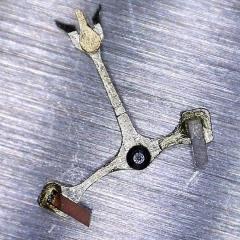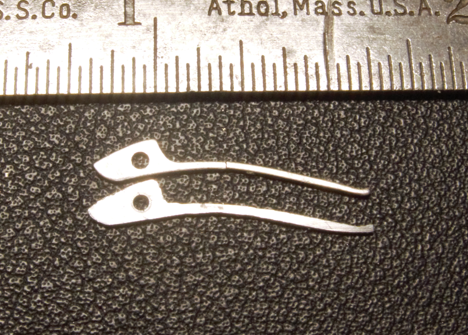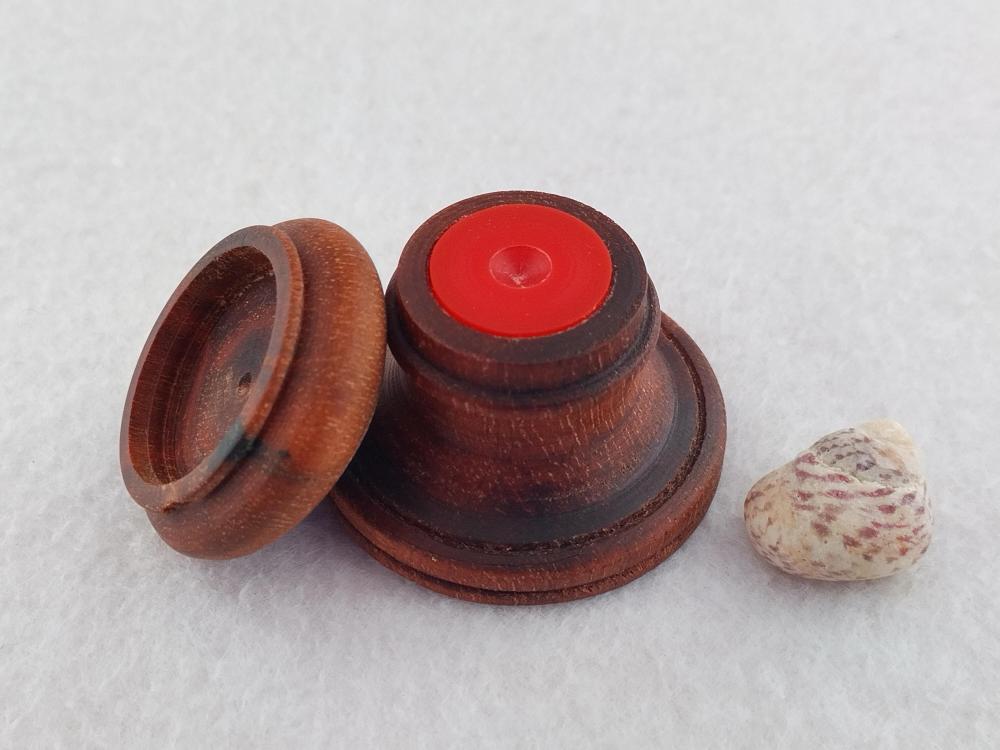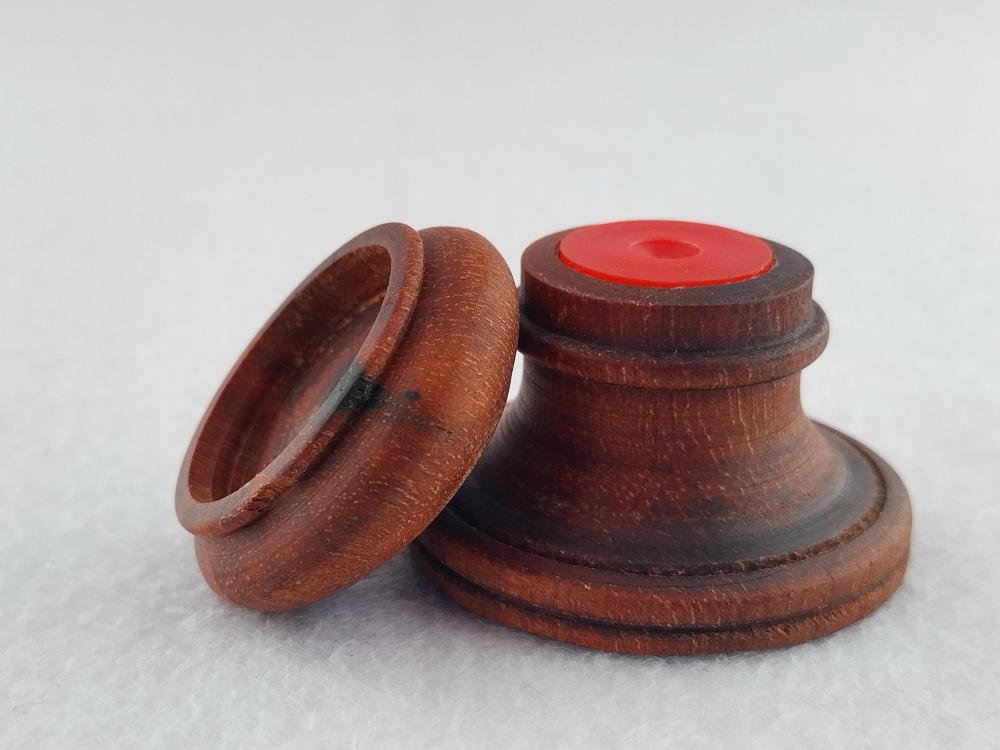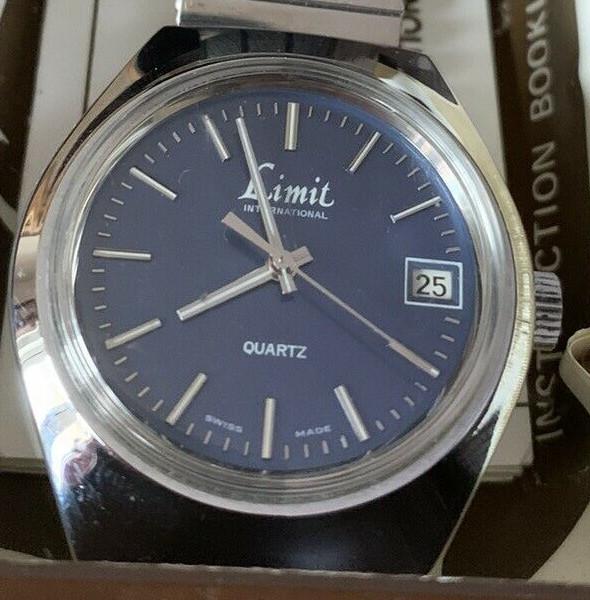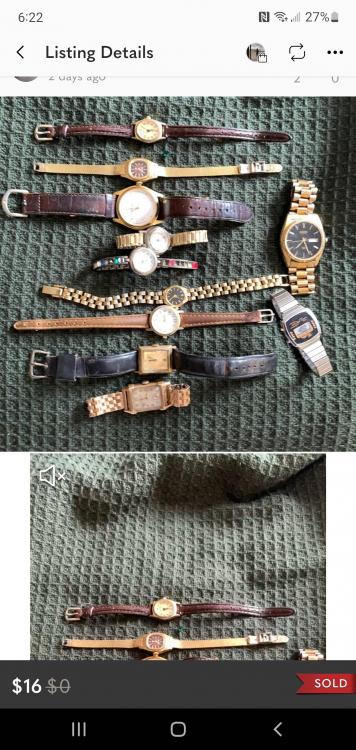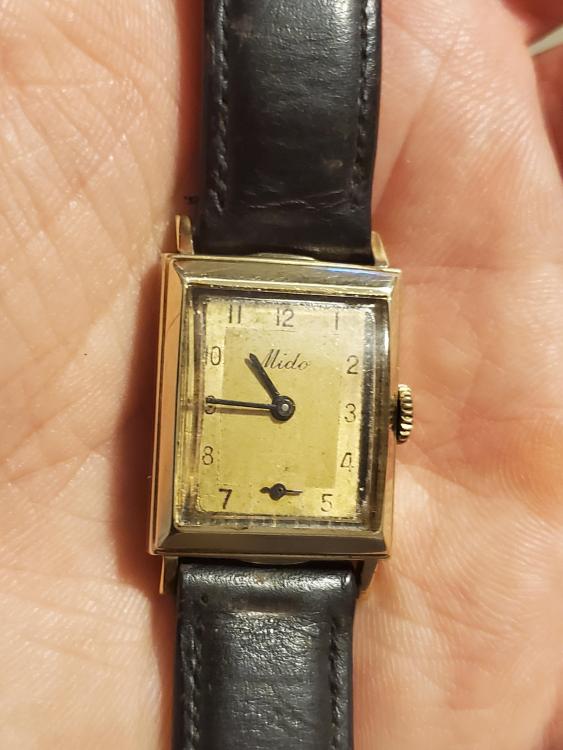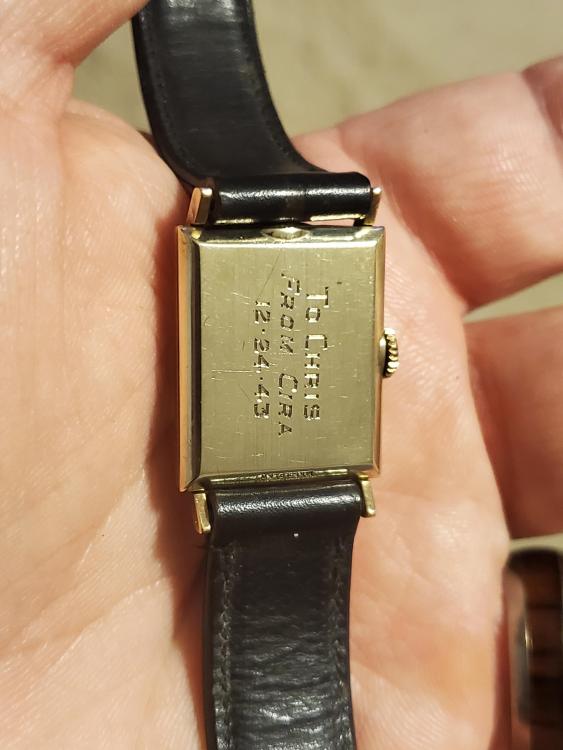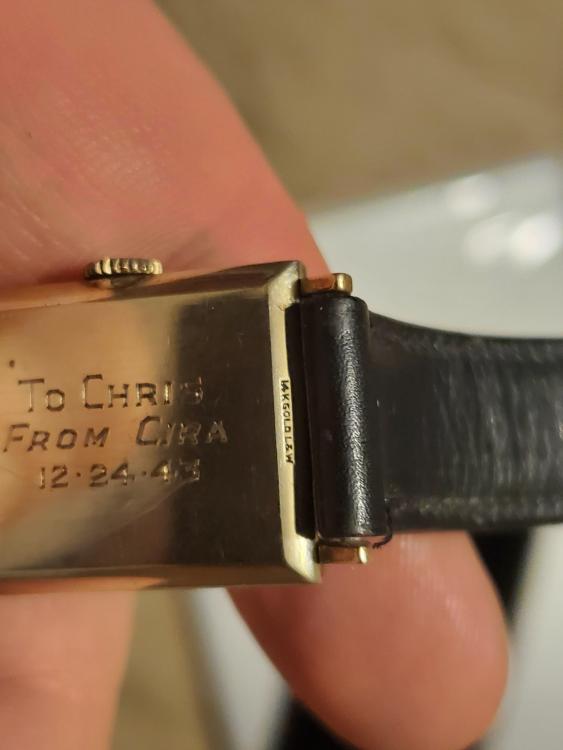Leaderboard
Popular Content
Showing content with the highest reputation on 02/14/22 in all areas
-
This New York Standard Watch is NOT precision. Anyway, due to that, this spring got broken so I had to make a new one. I bought a set of feeler gauges from Harbor Freight for $5. Then I picked the one of equivalent thickness to the broken spring. I glued the original spring to the feeler steel and then used a sort of miniature dremel tool to cut it down to get it close. Then I finished with a diamond file. It is not precise, but it is working just fine. This watch is my "learning" watch...learning the deeper things of watchmaking...like shellacking pallets on a fork and now, making a spring. If this were a fine watch, I would have continued to fine tune this until it was almost identical. But, I have proven the concept, so I am moving on.5 points
-
I made something similar not too long ago. I drilled the hole first then glued the part to the steel. Great idea in using feeler gauges, I'm pinching that!2 points
-
Thanks jdm. Just created an account. Thingiverse says new users must wait 24 hours before they can publish. So I will be back tomorrow.2 points
-
I have something similar. Different brand, have used it for my motorbikes while racing for years and now for watch work. There from the communist era, since they could build great fighter planes with tools like that it would also suit us1 point
-
You can do even better than that, budget permitting, get a watchmaker's micrometer (absolute best is Feintaster JFA, $$$), Jacot tool, bow and pivot file (again $$$). You will be able to shorten and resize pivots as needed, and will have surpassed many self-called watchmakers that can't fix anything without click-and-get parts.1 point
-
Very good that you took the time to find this discussion. Usually people just re-ask the same questions over and over again it never occurs to anyone that they might not be the first to have this problem Oh and then there's that other problem? Notice how all your watches as serial numbers on every single component other than usually do gears? Notice how to look carefully the balance wheel has the serial number scratch on it usually it's really faint? All the parts are manufactured together for each watch and then the balance wheel is fit to that watch. So buying generic balance completes even though they were in the catalog can be an issue where you may have to adjust things to get it to work. Then that assumes that nobody else has been adjusting and playing with the pocket watch which people seem to love to do.1 point
-
1 point
-
1 point
-
Next time try first a good center punch, being exact the difficult part, make a cross marking, there are also special loupes made to be more accurate. The resulting divot not only centers the drill but also give some flank for the cutting edges. Always use the lowest possible speed and good lubrication, even for small and shallow holes.1 point
-
As its a sweep second cannon pinion it is hollow, I used to put a Broach one the fits tight through the cannon pinon and with a pair of nippers pinch it lightly to tighten, Use that nice bergeon tool that is what I mean by nippers. It is a trial and error, a little each time as you are just starting out, just make sure it is't to tight that it strips teeth off1 point
-
Good stuff. I like reading about this kind of thing. It makes the rest of us less stressed out if a part breaks or goes missing, knowing that someone has demonstrated that such things can be remade. I used my little lathe, a die plate, and a slotting file, and made a screw. I didn't *need* to make it, but it helped me so much just to know that I could. Doing things like this help us grow as watchmakers.1 point
-
No surprise there, it's hardened spring steel which will not bend. There are a lot of parts like that in a watch, even unsuspicious ones, like casing tabs. The recommendation it's always the same, if something doesn't go in or out with no or little effort, stop right there, research, or ask for help. About a new mainspring, if it catches OK to the barrel arbor it's not that you can manipulate it to catch on the winder, even if you could you would then have to mess with it again to catch on the watch.. not a good idea. It's a fact that winders set, no matter the brand or how much you paid for, give no warranty that they will cover perfectly all the barrels and mainspring in existence. So either you mix or match components, sometime make your own arbor, drums, etc (unlikely for a beginner), or coil up by hand. Issues like that are especially common with vintage watches, a lot of good old watchmaking and toolmaking skills are needed. It's not the "click for parts / fit them / get paid" approach that current repairers, especially the official service centers, are able to get by with.1 point
-
The escape wheel can be repivoted. I would suggest putting away this restoration until your skills have caught up with the problem.1 point
-
A fairy early Swiss quartz (the late 1970s or early eighties artwork in the included instruction booklet state it runs at 32768 Hz, so that kind of dates it). Generally I wouldn't pay much attention to a quartz watch, but this is Swiss made, has the original box, warranty and instruction leaflet, and of course an irresistible blue dial. Limit International, in one form or another have been around since around 1912.1 point
-
I bet it's happened to everyone, don't get disheartened. I find the handle end of a pair of tweezers is a good tool to coax the mainspring into the barrel. It does tend to go in unevenly but it can levelled out without too much force. Brass tweezers preferably.1 point
-
1 point
-
That unfortunately is standard operating practice for most watch schools in the US. Personally I always find it amusing that you have to take it entrance test that shows that you have watchmaking skills so that you can go to a school to get watchmaking skills. It's a shame you didn't have a time machine You can travel back in time and go to the Bulova school it was in New York somewhere. Was a really excellent school but it's gone like most of the schools in the US. There aren't that many decent schools left unfortunately. If you want to grasp the US school situation for watch repair look at this link https://www.awci.com/educationcareers/research-and-education-council-rec-schools-u-s/ This is an interesting school I don't think driving is going to be a problem at all. They even have a website with testimonial information and I wouldn't waste my time here at all. The description of the master watchmaking class is interesting and I think interesting is probably the nicest thing I can say about it. https://ohe.ct.gov/heweb/PosaInfo.asp?F=1757 http://jwrschool.com/ Too many choices too many problems? If you can get in the Patek-Philippe school You would really be set for life. For those that don't grasp the school I have a link it talks about the school. The biggest problem is getting in and really would be nice if you had prior knowledge? But as there's a phone number and you know where they're located It's worth giving them a call talking to them. Who knows maybe they have an opening right now maybe have a waiting list of the end of time. The only way to find out is give them a call. https://mailinwatchrepair.com/sample-article-1/ As you don't want to leave home your choices become extremely limited. Maybe you should listen to your mother? Start the college get something practical get something Practical that you can make money with but don't give up watch repair? Here's a nice suggestion that I've quoted The nice thing about Mark's course is you don't have to physically go anywhere. It's recognized and well respected by everyone on this group. It's being taught by somebody who actually knows what watch repair is. Take the first course find out if you like watch repair.1 point
-
One advantage of the Seitz jeweling tool over the Horia jeweling tool (the version without a lever press) is actually the lever. Yesterday I was adjusting end-shake and the jewel was sitting pretty hard. When the friction finally gave I couldn't prevent myself from continuing rotating the screw and overshot. This, of course, could never happen with the lever type as no matter how hard the lever is pressed it will only go so far as the micrometer screw has been set. So, in this respect the Seitz jeweling tool, and I would guess the lever operated Horia version as well(?), is a bit safer. It's not a big deal, but I thought I'd share it in case someone is in the process of getting that first jeweling tool.1 point



